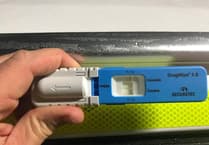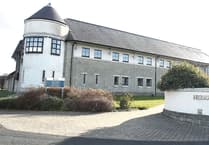Aberystwyth University scientists will use new radar to take 3D measurements of the Northern Lights for the very first time.
The EISCAT_3D is being assembled in Scandinavia and will be ready later this year for researcher Dr Rosie Johnson, who will use the radar array to measure the ionosphere - the outer layer of the Earth's atmosphere.

Dr Johnson said: “The ionosphere is complex and changes constantly from day to day due to variations in space weather conditions.
“Even small changes in the ionosphere can scatter radio waves from satellites interrupting communications and GPS that society is becoming increasingly reliant on.
“Our focus will be to use the unprecedented resolution of EISCAT_3D to understand the small-scale changes of the ionosphere and the impact of this on technological systems.” The ionosphere is where the aurora borealis gets its light.
Charged sun particles get trapped in the Earth’s magnetic field and stream down into polar regions, hitting oxygen particles in the ionosphere 70km above Earth and up into space. Fantastic lights are created when these particles try to rid themselves of excess energy, creating a green glow.
As well as radar to measure the aurora on Earth, Dr Johnson is also looking at it on Jupiter.
Auroras have been observed on Venus, Mars, Saturn and Uranus, but Jupiter’s is the most powerful in the solar system due to its unique atmosphere, fast rotation and magnetic field 20,000 times stronger than Earth’s.
“Jupiter offers us a laboratory in space to study the aurora in a different context,” said Dr Johnson.
“Normally in a laboratory, you can change the experiment, but in this case, changing the experiment means changing planet.
“We know the solar wind impacts the Earth’s aurora, but on Jupiter, it isn’t clear how the solar wind and the aurora are connected - no one has settled on a definitive answer.
“This work will help us to understand the connection between the Sun and the planets and whether what is happening on Jupiter is similar to Earth.
“Hopefully it will also help us to better understand our own planet.”




Comments
This article has no comments yet. Be the first to leave a comment.